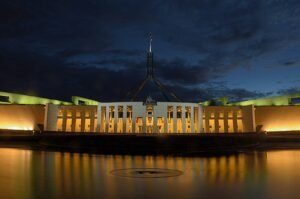Property Gold Rush: NSW Housing Reform Creates Billion-Dollar Opportunities
Sydney, NSW – In a move that could reshape the property landscape across New South Wales, the state government has introduced a landmark planning policy targeting areas within 800 metres of major transport and activity hubs. The Low and Mid-Rise Housing Policy aims to unlock thousands of new development opportunities while addressing the ongoing housing affordability crisis.
The NSW Housing Reform: Understanding the Policy Framework
The policy’s intent is clear: to deliver more homes in areas close to public transport, shops, and services — the ingredients of liveable, well-connected communities. According to the NSW Government, this is about “supporting a choice of well-designed and sustainable homes in well-located areas.”
Key Elements of the Policy
- Strategic Location Targeting: 171 transport hubs and activity centres across NSW have been designated as catalyst sites for housing growth.
- 800-Metre Radius: Properties within a 10-minute walk (800m) from these hubs are eligible for rezoning.
- Increased Density: Medium to high-density residential development is now encouraged in these zones.
- Faster Approvals: A streamlined planning process will accelerate development approvals.
- Design Requirements: Developments must meet design and sustainability benchmarks under the policy.
The 800-Meter Gold Zone: Valuing the Opportunity
This policy could spark a modern-day property gold rush. Experts suggest that land within the 800m zones may see immediate uplifts in value due to newly enabled development potential.
Estimated Value Uplifts
- Medium-density-eligible residential lots: 30–100% value increase
- High-density potential sites: Up to 300% increase near metro stations
- Corner blocks and amalgamated parcels: Premium pricing due to scale potential
According to leading property analysts, the cumulative value uplift across the 171 identified hubs may exceed $10 billion.
Case Study: Northern Beaches Corridor
In the Northern Beaches, homes previously valued at $2 million may now fetch $3–4 million from developers, purely based on medium-density redevelopment potential — a staggering 70% uplift.
Inside the 171 Designated Sites
The locations chosen reflect both current infrastructure capacity and future planning objectives.
Types of Locations
- Heavy rail stations (e.g., Parramatta, Hurstville)
- Sydney Metro stations (e.g., Waterloo, Chatswood)
- Light rail stops (e.g., Kensington, Randwick)
- Bus rapid transit corridors (e.g., Northern Beaches B-Line)
- Regional hubs (e.g., Newcastle Interchange, Wollongong CBD)
Geographic Distribution
- 60% in established Sydney suburbs
- 15% in Western Sydney growth corridors
- 15% in Greater Newcastle and Illawarra
- 10% in regional NSW towns
Strategies for Property Owners: Maximize the Opportunity
Sell, Develop, or Hold?
For property owners in the “gold zone,” strategic planning is crucial. Common strategies include:
- Sell: Take advantage of rising demand and speculation.
- Develop: Partner with builders or fund projects directly to extract full value.
- Hold: Wait for further market appreciation or policy certainty.
Key Considerations
- Block size and frontage
- Zoning shifts (e.g., R2 to R3 or R4)
- Existing structure value vs. land value
- Potential for lot amalgamation with neighbours
Challenges and Pushback
Community Concerns
Despite the policy’s potential, not all reactions have been positive. Community groups in areas like Ryde and the North Shore have raised objections over:
- Congestion and parking
- Loss of heritage and character
- Strain on schools and hospitals
- Insufficient open space
Infrastructure and Affordability Questions
While $300 million has been allocated for priority precinct infrastructure, critics argue that broader systems (e.g., transport, sewer, and schools) remain underfunded. Moreover, unless affordability mandates are introduced, many new developments may not be accessible to lower-income buyers.
Market Movements: Early Signs of Impact
Price Activity
- 5–12% property price premiums observed in newly eligible zones
- Increased developer inquiries and auction competition
- Longer days on market for owners holding out for rezoning gains
Developer Surge
Several major developers have launched targeted acquisition teams. According to industry reports, pre-lodgment planning meetings are up 30% across councils covering these hubs.
Looking Ahead: NSW’s Urban Future
Benefits of Transit-Oriented Development
- Reduced reliance on cars
- Greater environmental sustainability
- Revitalized suburban retail centres
- More diverse housing mix
A New Era of Urban Design
With townhouses, low-rise apartments, shop-top housing, and mixed-use projects, the new zones may transform suburbs long dominated by detached housing into vibrant urban villages aligned with global best practice.
Conclusion: Strategic Moves in a Golden Moment
The NSW Low and Mid-Rise Housing Policy could become the most impactful property reform in a generation. For eligible property owners, the next move could mean a multi-million-dollar windfall — but timing, knowledge, and professional guidance will be key to unlocking this value.
As the state balances density with liveability, the success of this reform will hinge on long-term infrastructure investment, affordability safeguards, and thoughtful design — not just how many homes are built, but how well people live in them.
Further Reading & References
- NSW Low and Mid-Rise Housing Policy – NSW Planning
- More Homes Close to Transport – NSW Government
- Infrastructure NSW
- Domain News – NSW Rezoning Coverage
Disclaimer
This article is for informational purposes only and does not constitute financial or legal advice. Property owners are encouraged to seek professional guidance before making investment or development decisions based on rezoning or planning reforms.

